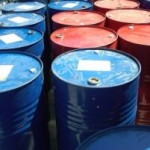Gold prices were lower during early trade in Europe today, as investors turn to economic data from the EU and US to gauge any change of mood. Conflicts in Iraq and Ukraine remained in focus, with tensions growing and spurring haven bids.
Gold futures for delivery in September on the Comex in New York traded at $1 309.4 per troy ounce at 8:58 GMT today, down 0.09%. Prices ranged from $1 308.9 to $1 312.5 per troy ounce.
“It is clear to us that day trading is the current theme for gold,” Standard Bank analyst Walter de Wet wrote in a note to investors. “Market participants dont seem to have substantial appetite for carrying risk overnight.”
Silver for September was up 0.17% to trade at $19.938 per troy ounce, while palladium was down 0.14% at $876.80. October platinum was down 0.06% at $1 471.25.
US, EU economies
US retail sales will be posted later today. Analysts expect a 0.2% monthly growth be reported for July, which would be the sixth straight month of increasing sales. Retail sales are a key metric for gauging the US economy, as it is a leading indicator for consumer spending, which generates about 80% of US GDP. A stronger-than-expected reading would boost the dollar and vice versa.
Elsewhere, France and Germany, the Eurozones two top economies, posted CPI earlier today. German consumer prices rose by 0.3% on a monthly basis in July, and 0.8% annually, while Frances inflation was at -0.3% on a monthly basis. The readings come after the German ZEW posted its surprisingly low reading on economic sentiment, pressuring the euro to near an eight-month low, and add to pessimistic sentiment for the EU, ahead of Bloc-wide CPI and GDP readings tomorrow.
The euro has a very strong opposite correlation with the US dollar, meaning a weaker euro directly increases the value of the dollar, and the dollar quickly caught up to near an eight-month peak yesterday.
Since gold is mostly traded in dollars, the value of the US currency plays a major role in the metal’s investment appeal, with a stronger dollar lifting the price of gold to foreign currencies and vice versa.
The US Dollar Index, which gauges the strength of the US currency, added 0.04% yesterday, and by 7:50 GMT today was up a further 0.10% at 81.64, supported by a weakening euro. Meanwhile, US stocks closed slightly lower on Tuesday, with all three major indices logging declines between 0.06% and 0.16%.
Elsewhere, assets at the SPDR Gold Trust, the largest exchange-traded gold-backed fund, were unchanged at 795.86 tons on Tuesday, after losing some 6 tons last week. Holdings are at their lowest level in six weeks, signaling lower investor appetite for the precious metal.
“On the macroeconomic front, as the pace of recovery in major economies diverges, so will monetary policies, and that will be a driver for gold,” Yang Xi, an Hangzhou-based analyst at Yongan Futures Co., said for Bloomberg. “Geopolitical safe-haven demand has triggered higher gold prices recently.”
Iraq, Ukraine
Investors continued to monitor developments in the Middle East and Ukraine, as both Iraq and Russia are still facing a quite real possibility of energy export disruption.
Iraq, OPEC’s second-top oil producer, with exports of 2.5m barrels per day, would receive more help, as the country fights against jihadists of the Islamic state, US and Iraqi authorities reported. The US have begun supplying Kurdish forces with weaponry, while also aiding fleeing civilians via air drops of food, water and medicine. France and the UK have also been flying aid to the displaced and ravaged civilians.
Meanwhile, Iraqi politics are also on the table, with incumbent PM Nouri Maliki refusing to step down, after President Fouad Massoum declined to nominate him for third term, effectively disregarding the constitution. He offered the job to a more consensual figure, the deputy parliament speaker Haider al-Abadi. Maliki deployed forces personally loyal to him in Baghdad on Monday, and vowed to “fix the mistake” of the President, but there have been no reports of violence so far.
Elsewhere, Ukraine is preparing to receive a convoy of Russian humanitarian aid, which caused some concern and controversy earlier. NATO had warned Moscow not to use humanitarian or peacekeeping incentives in order to send troops to Ukraine, while warning that Russia has massed a significant number of combat-ready troops on the border.
The Kremlin insisted on the humanitarian nature of the convoy, and has denied any intention to invade Ukraine or that it supports in any way the pro-Russian separatists in its neighbor.
Russia is subject to increasingly tougher economic sanctions by the West over its involvement with the crisis in Ukraine, which started last year. So far sanctions have failed to disrupt energy exports, but tensions are as high as ever.
“In these past weeks … the market completely put aside or underestimated the growing geopolitical risk, which in fact has been increasing,” Edouard Mouton, head of the quantitative desk at Diapason Commodities Management SA in Lausanne, Switzerland, said for The Wall Street Journal.
Technical support and resistance levels
According to Binary Tribune’s daily analysis, December golds central pivot point on the COMEX stands at $1 312.2. In case futures manage to breach the first resistance level at $1 317.7, the contract will probably continue up to test $1 324.7. In case the second key resistance is broken, the precious metal will likely attempt to advance to $1 330.2.
If the contract manages to breach the first key support at $1 305.2, it will probably continue to slide and test $1 299.7. With this second key support broken, the movement to the downside may extend to $1 292.7.





